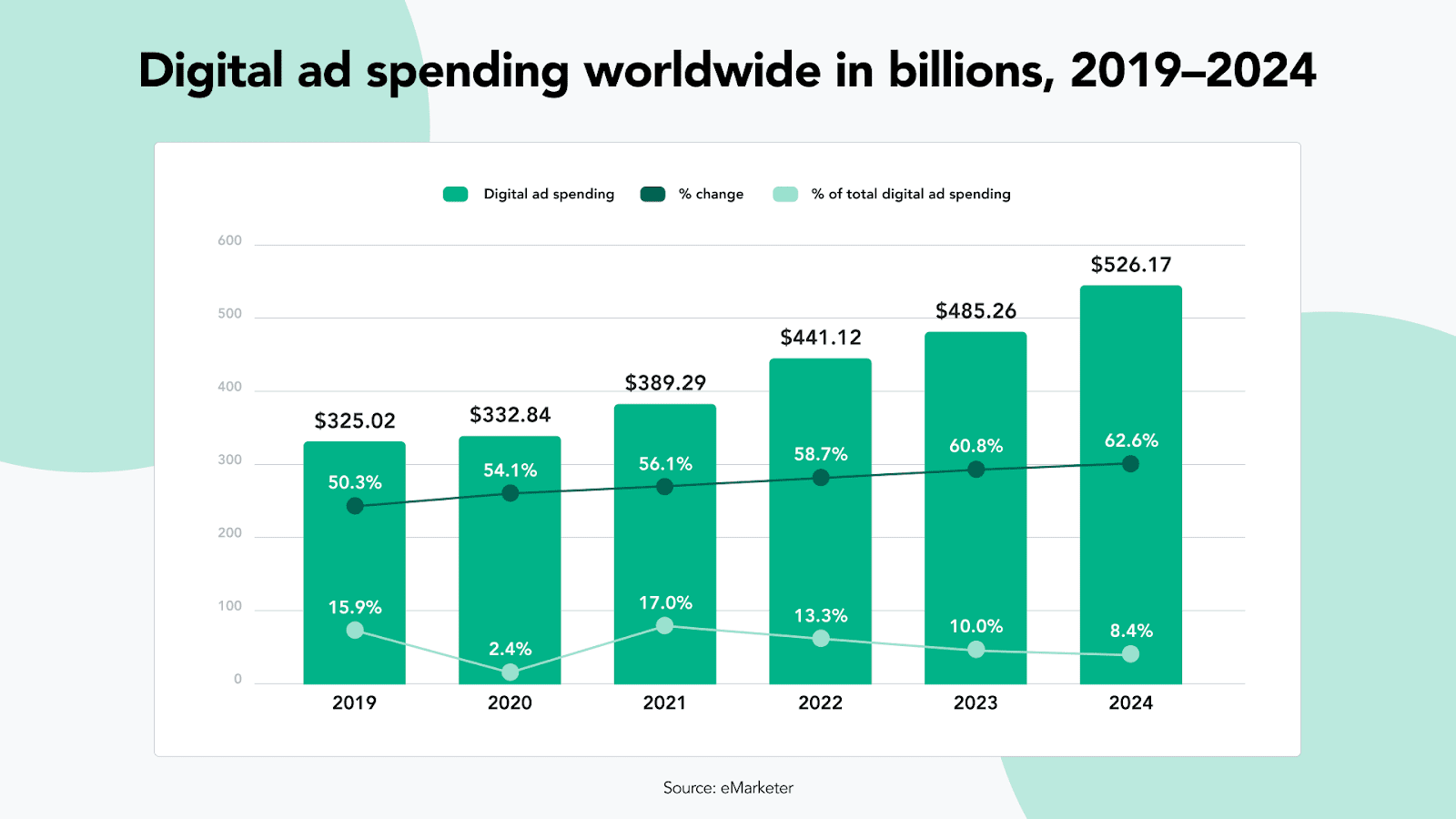
In today’s digital age, video marketing has become an essential tool for businesses across various industries. Law firms, in particular, have started to recognize the power of video in enhancing their brand presence and engaging with clients on a deeper level. By effectively utilizing video marketing strategies, law firms can not only boost their online visibility but also establish themselves as thought leaders in their respective fields.
With the increasing consumption of online video content, incorporating videos into your law firm’s marketing strategy can significantly impact client engagement. Videos allow you to convey complex legal concepts in a visually appealing and easily digestible format, making it more accessible for clients seeking legal advice or services.
Moreover, videos enable law firms to showcase their expertise and build trust with potential clients. Whether it’s through client testimonials, informative legal tips, or case study analyses, videos can establish your firm as a knowledgeable and reliable resource in the legal industry.
To unlock the full potential of video marketing for your law firm, it’s important to create compelling and informative videos that resonate with your target audience. By harnessing the power of videos, law firms can enhance client engagement, strengthen their brand reputation, and ultimately drive more conversions. So, it’s time to leverage video marketing and take your law firm’s online presence to the next level.
The importance of video marketing for law firms
In today’s fast-paced digital world, capturing and retaining your audience’s attention is more challenging than ever. Static content alone may not be enough to effectively engage potential clients. This is where video marketing comes in. Videos have the ability to convey information in a more engaging and memorable way, making them a powerful tool for law firms to connect with their target audience.
One of the key reasons why video marketing is crucial for law firms is its ability to humanize your brand. By showcasing your lawyers, staff, and office environment, you can create a more personal connection with potential clients. This human touch can help build trust and establish credibility, which are vital in the legal industry where clients often seek assistance during challenging and sensitive times.
Additionally, videos can help simplify complex legal concepts and make them more accessible to the average person. Legal jargon can be overwhelming and intimidating for people outside the legal profession. By breaking down complex topics into easily digestible video content, law firms can educate their audience and empower them to make informed decisions.
Furthermore, videos have the potential to go viral and reach a wider audience. With the rise of social media platforms like YouTube, Facebook, and Instagram, law firms can leverage these channels to amplify their reach and attract potential clients who may not have found them through traditional marketing channels. By creating shareable and engaging video content, law firms can extend their brand visibility and increase their chances of getting discovered by new clients.
Benefits of using video marketing in the legal industry
The benefits of incorporating video marketing into your law firm’s overall marketing strategy are numerous. Let’s explore some of the key advantages that video marketing offers to law firms:
1. Increased Engagement: Videos have the power to captivate and engage viewers in a way that other forms of content may not. By incorporating videos into your website, social media platforms, and email marketing campaigns, you can grab your audience’s attention and keep them engaged for longer periods of time. This increased engagement can lead to higher conversion rates and a stronger connection with potential clients.
2. Improved SEO Rankings: Search engines, like Google, value video content and often prioritize websites that incorporate videos in their search results. By optimizing your videos with relevant keywords, titles, and descriptions, you can improve your law firm’s visibility in search engine rankings. This can drive more organic traffic to your website and increase the chances of attracting potential clients.
3. Enhanced Brand Awareness and Perception: Videos allow you to showcase your law firm’s unique personality and values. By creating high-quality and informative videos, you can establish your firm as an authority in your practice area and build a positive brand perception. This can differentiate your firm from competitors and attract clients who resonate with your firm’s values and approach.
4. Increased Trust and Credibility: Clients often seek legal services from firms they trust. By showcasing your expertise, knowledge, and experience through videos, you can build trust with potential clients before they even contact your firm. Incorporating client testimonials and success stories can further enhance your firm’s credibility and reassure potential clients that they are making the right choice.
5. Cost-Effective Marketing: Video production may seem like an expensive endeavor, but it can actually be a cost-effective marketing strategy in the long run. Once you have created a library of videos, you can repurpose and share them across multiple channels, reaching a wider audience without incurring additional costs. Additionally, videos have a longer shelf life compared to other forms of content, providing ongoing value for your law firm.
Incorporating video marketing into your law firm’s overall marketing strategy can deliver these benefits and more. By understanding the power of video and its impact on client engagement, law firms can stay ahead of their competitors and position themselves as industry leaders.
Video marketing statistics for law firms
To further emphasize the importance and effectiveness of video marketing for law firms, let’s take a look at some compelling statistics:
1. According to Cisco, by 2022, online videos will make up more than 82% of all consumer internet traffic. This highlights the increasing popularity and consumption of video content, making it a valuable medium for law firms to engage with their target audience.
2. A survey by Animoto found that 96% of consumers find videos helpful when making purchasing decisions online. This statistic applies to the legal industry as well, where potential clients often conduct thorough research before choosing a law firm. By providing informative and engaging videos, law firms can influence these decisions in their favor.
3. HubSpot reports that including a video on a landing page can increase conversion rates by up to 80%. By incorporating videos into your law firm’s website and landing pages, you can significantly improve your chances of converting website visitors into potential clients.
4. According to Forbes, 90% of customers say that videos help them make buying decisions. This statistic is particularly relevant for law firms, as potential clients rely heavily on reviews, testimonials, and informative content to choose a firm they can trust. By providing videos that address common legal concerns and showcase your firm’s expertise, you can influence potential clients’ decision-making process.
These statistics clearly demonstrate the power and effectiveness of video marketing for law firms. By leveraging this medium, law firms can tap into a vast audience and establish themselves as go-to resources within the legal industry.
Creating a video marketing strategy for your law firm
To fully harness the power of video marketing, it’s essential to develop a well-thought-out strategy that aligns with your law firm’s goals and target audience. Here are some steps to help you create an effective video marketing strategy:
1. Define Your Objectives: Start by identifying the specific goals you want to achieve through video marketing. Are you looking to increase brand awareness, generate leads, or educate potential clients? Defining your objectives will guide your video creation process and ensure that your videos align with your overall marketing strategy.
2. Identify Your Target Audience: Understanding your target audience is crucial for creating videos that resonate with them. Consider their demographics, preferences, pain points, and the type of legal services they may be seeking. This knowledge will help you tailor your videos to address their specific needs and interests.
3. Determine Your Key Messages: Clearly define the key messages you want to convey through your videos. Whether it’s showcasing your firm’s expertise, providing legal tips, or sharing client success stories, your key messages should align with your target audience’s needs and interests.
4. Choose the Right Video Formats: There are various video formats you can choose from, depending on your objectives and target audience. Some common video formats for law firms include client testimonials, educational videos, case study analyses, behind-the-scenes glimpses, and Q&A sessions. Select the formats that best align with your objectives and resonate with your target audience.
5. Create High-Quality and Engaging Videos: Invest in high-quality video production to ensure that your videos look and sound professional. Poorly produced videos can negatively impact your law firm’s brand perception. Additionally, focus on creating engaging content that captivates your audience and encourages them to take action, whether it’s contacting your firm or sharing the video with others.
6. Optimize Your Videos for SEO: To maximize the reach and visibility of your videos, optimize them for search engines. Incorporate relevant keywords in your video titles, descriptions, and tags. Additionally, transcribe your videos and include closed captions to make them more accessible and improve their search engine rankings.
7. Promote Your Videos on Social Media: Leverage social media platforms to share and promote your videos. Identify the platforms that resonate most with your target audience and create a content distribution plan. Encourage engagement by asking viewers to like, comment, and share your videos. Consider running targeted ad campaigns to reach a wider audience and increase video views.
8. Measure Your Video Marketing Success: Regularly track and analyze the performance of your videos to gauge their effectiveness. Monitor metrics such as views, engagement, click-through rates, and conversion rates. Use this data to identify what’s working and what can be improved in your video marketing strategy.
By following these steps, you can create a comprehensive video marketing strategy that aligns with your law firm’s objectives and resonates with your target audience. Remember, consistency is key when it comes to video marketing, so make it a regular part of your overall marketing efforts.
Types of videos to create for your law firm
To effectively engage your target audience and showcase your law firm’s expertise, consider creating the following types of videos:
1. Client Testimonials: Ask satisfied clients to share their experiences working with your law firm. Testimonials add credibility and trust to your brand, helping potential clients feel more confident in choosing your services.
2. Educational Videos: Create videos that address common legal concerns, explain legal processes, or provide helpful legal tips. These videos position your firm as a reliable resource and can attract potential clients seeking educational content.
3. Case Study Analyses: Showcase your firm’s successful cases and highlight your expertise in specific practice areas. Case study analyses demonstrate your ability to achieve favorable outcomes and can instill confidence in potential clients.
4. Meet the Team Videos: Introduce your lawyers, staff, and their areas of expertise. This humanizes your firm and helps potential clients connect with the individuals who will be handling their legal matters.
5. Behind-the-Scenes Glimpses: Provide a behind-the-scenes look into your law firm’s operations and culture. This can help potential clients get a sense of your firm’s values and work environment.
6. Q&A Sessions: Host live or pre-recorded Q&A sessions where you address frequently asked questions or legal topics of interest. This interactive format allows potential clients to engage with your firm directly and get their questions answered.
7. Explainer Videos: Simplify complex legal topics by creating animated or whiteboard explainer videos. These visually appealing videos break down complex concepts into easily understandable terms.
8. Webinar and Workshop Recordings: If your law firm conducts webinars or workshops, record and share the sessions as videos. This allows potential clients who couldn’t attend the live event to still benefit from the valuable content.
By incorporating a variety of video types into your law firm’s video marketing strategy, you can cater to different preferences and needs of your target audience. Experiment with different formats to determine what resonates most with your viewers and adjust your strategy accordingly.
Tips for creating engaging and informative legal videos
When creating legal videos for your law firm, keep the following tips in mind to ensure they are engaging and informative:
1. Know Your Audience: Understand the demographics, preferences, and pain points of your target audience. This knowledge will help you create content that is relevant and resonates with them.
2. Keep it Concise: Attention spans are short, so aim to keep your videos concise and to the point. Avoid unnecessary tangents and focus on delivering valuable information in a clear and concise manner.
3. Use Visuals and Graphics: Incorporate visuals, such as charts, graphs, and infographics, to enhance understanding and break up the monotony of talking heads. Visuals can make complex legal concepts more digestible and engaging.
4. Speak in Plain Language: Avoid legal jargon and speak in plain, relatable language. Remember that your audience may not be familiar with legal terms, so explain them in a way that is easily understood.
5. Show Authenticity: Be genuine and authentic in your videos. People connect with real people, so let your personality shine through and build a personal connection with your audience.
6. Incorporate Storytelling: Weave storytelling elements into your videos to make them more engaging. Share real-life examples and anecdotes that illustrate the points you are trying to convey.
7. Use Professional Lighting and Sound: Invest in good lighting and audio equipment to ensure your videos look and sound professional. Poor lighting or audio quality can distract viewers and diminish the credibility of your content.
8. Include a Call to Action: Always include a clear call to action at the end of your videos. Whether it’s directing viewers to contact your firm, subscribe to your newsletter, or visit your website, guide them towards the next step.
By incorporating these tips into your video creation process, you can create engaging and informative legal videos that
Best practices for video SEO optimization
When it comes to video marketing, optimizing your videos for search engines is crucial for maximizing their reach and visibility. Here are some best practices for video SEO optimization:
1. Keyword research: Conduct thorough keyword research to identify the keywords and phrases that your target audience is using to search for legal services. Incorporate these keywords naturally into your video titles, descriptions, and tags to improve your video’s search rankings.
2. Create engaging video thumbnails: A visually appealing and relevant thumbnail can significantly increase click-through rates. Use high-quality images and consider adding text overlays to provide context and entice viewers to click on your videos.
3. Write compelling video descriptions: Craft compelling and informative descriptions that accurately describe the content of your videos. Include relevant keywords, but avoid keyword stuffing. Incorporate relevant links, such as your law firm’s website or social media profiles, to drive traffic and increase engagement.
4. Transcribe your videos: Transcribing your videos not only makes them more accessible to viewers with hearing impairments but also provides search engines with additional text to index. This can improve your video’s search rankings and make it more discoverable.
5. Optimize video titles: Create concise and keyword-rich video titles that accurately reflect the content of your videos. Use descriptive titles that pique viewers’ interest and encourage them to watch.
By implementing these video SEO optimization best practices, you can improve your law firm’s online visibility and increase the likelihood of attracting potential clients.
Promoting your law firm’s videos on social media
Social media platforms provide an excellent opportunity for law firms to reach a wider audience and promote their videos effectively. Here are some tips for promoting your law firm’s videos on social media:
1. Choose the right platforms: Identify the social media platforms that are most popular among your target audience and focus your efforts on those platforms. Facebook, Instagram, Twitter, and LinkedIn are commonly used platforms for video promotion, but it’s essential to research where your audience spends the most time.
2. Optimize your video posts: When sharing your videos on social media, optimize your posts to grab attention and encourage engagement. Use attention-grabbing captions, hashtags, and compelling visuals. Consider adding a short teaser or preview to entice viewers to watch the full video.
3. Engage with your audience: Building a strong relationship with your audience is crucial for successful video marketing. Respond to comments, answer questions, and encourage discussions around your videos. Engaging with your audience will not only boost your video’s visibility but also help you establish yourself as a trusted authority in your field.
4. Collaborate with influencers: Collaborating with influencers or industry experts can help amplify your video’s reach and credibility. Identify influencers or thought leaders in the legal industry who have a significant following and reach out to them for potential collaborations or partnerships.
5. Paid promotion: Consider allocating a budget for paid promotion of your law firm’s videos on social media. Platforms like Facebook and Instagram offer targeted advertising options that allow you to reach a specific audience based on demographics, interests, and behaviors. This can help increase your video’s visibility and attract potential clients.
By leveraging the power of social media, you can effectively promote your law firm’s videos and engage with a wider audience, ultimately driving more traffic to your website and increasing client engagement.
Measuring the success of your video marketing efforts
To determine the effectiveness of your law firm’s video marketing efforts, it’s essential to measure key performance indicators (KPIs) and analyze relevant metrics. Here are some metrics to consider when measuring the success of your video marketing campaigns:
1. View count: The number of views your videos receive is a fundamental metric to track. It provides an indication of your video’s reach and popularity. However, it’s important to note that view count alone does not necessarily indicate success. It’s crucial to analyze other metrics alongside view count to gain deeper insights into your video’s performance.
2. Engagement metrics: Engagement metrics, such as likes, comments, and shares, are indicators of how well your videos resonate with your audience. High engagement rates suggest that your videos are capturing viewers’ attention and evoking a response. Monitor these metrics closely to gauge audience interest and adjust your video content accordingly.
3. Click-through rate (CTR): CTR measures the percentage of viewers who click on a link or call to action (CTA) within your video. A high CTR indicates that your videos are compelling enough to prompt viewers to take action, whether it’s visiting your website, subscribing to your channel, or contacting your law firm. Monitor your CTR to assess the effectiveness of your video’s CTAs and optimize them if necessary.
4. Conversion rate: Conversion rate measures the percentage of viewers who take a desired action after watching your video, such as filling out a contact form or requesting a consultation. Tracking conversion rates allows you to evaluate the effectiveness of your video marketing in driving actual business results. If your conversion rate is low, consider optimizing your video content or CTAs to improve conversion rates.
5. Retention rate: Retention rate measures how long viewers stay engaged with your videos. A high retention rate suggests that your videos are engaging and valuable, while a low retention rate may indicate that your videos are not capturing viewers’ attention or are too long. Analyze retention rates to identify areas for improvement and create more engaging video content.
By regularly monitoring and analyzing these metrics, you can assess the success of your video marketing efforts and make data-driven decisions to optimize your future videos.




